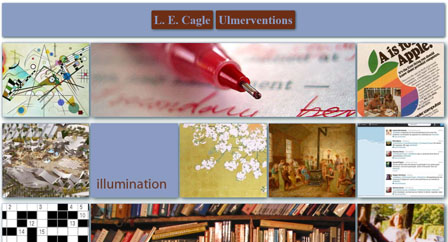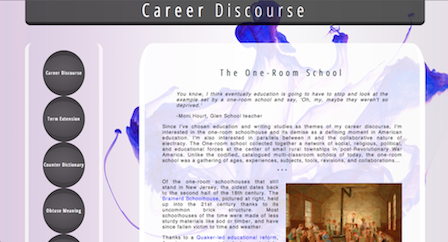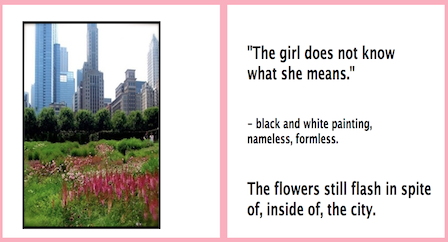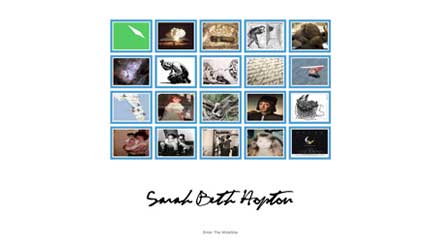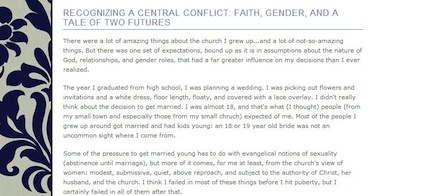Our [Electrate] Stories
Explicating Ulmer's Mystory Genre
Marc C. Santos, Ella R. Bieze, Lauren E. Cagle, Jason C., Zachary P. Dixon, Kristen N. Gay, Sarah Beth Hopton, Megan M. McIntyre
4. Can/should you learn Ulmer while learning HTML and CSS?
One of the more practical considerations in teaching Gregory L. Ulmer’s mystory is whether to teach it concurrent to covering hypertext markup language (HTML) and cascading style sheets (CSS). As our experiment with bundling both pedagogies shows, there are significant challenges in so doing, as both learning HTML/CSS and learning to do Ulmer’s mystory are vexing and difficult in their own right, let alone when combined. Some instructors/courses might be better served using a content management system or blogging software such as WordPress. However, our course, a graduate seminar in New Media Production, aimed to supply a deep proficiency with contemporary coding language and digital authoring tools.
In defending our answers to this question of to combine or not to combine, participants divided like a Supreme Court decision—4:3—in slight favor of teaching HTML/CSS concurrent to the mystory. Interestingly, almost every participant mentioned issues of context, goals, and exhaustion. Some participants stressed the advantages of learning HTML/CSS alongside the mystory genre: collaboration and invention.
One reason to not teach the syntax alongside the mystory genre was best articulated by Ella R. Bieze, who had no previous coding experience. She was clear to note the difference between “’learning’ Ulmer’s mystory project and ‘doing’ Ulmer’s mystory project.” It’s tough, she argued, to learn HTML/CSS while adequately focusing on the “you” required to thoughtfully do the mystory. Sarah Beth Hopton, fluent in HTML and CSS but not as familiar with the dense postmodern philosophy underscoring the mystory project, also wondered whether this pairing was not asking too much.
Conversely, Lauren E. Cagle, while acknowledging the exhaustion experienced during the project, found that such exhaustion produced a kind of flow, which spontaneously occurred as she tried, botched, fixed then reimagined better ways of problem solving. It reminded her of the martial arts training, in which one trains until reaching beyond the point of exhaustion to force reliance on muscle memory; one reaches a point in which you act rather than think. If the point of the mystory is to probe the unconscious, then this level of exhaustion might actually be productive. So, for Cagle, learning HTML/CSS concurrently “prompted the shift electracy calls for from logical processes to immediate affective responses.” Jason C. noted a similar shift. He suggested that though HTML and CSS can look “rigidly rule bound,”; in fact, the syntax offers hatches through which a student can escape the confines of the printed page in much the same way that the mystory offers a new way of breaking apart and out of the self. However, such advantages may only follow those who either already had learned coding basics, such as Cagle, or adapted quickly to the new technology, such as Jason C.
Despite these advantages, time was a recurring point of frustration for most of the graduate students who undertook the project. Zachary P. Dixon, who had no coding experience, wondered if doing both was not an unreasonable request, but ultimately decided that if Ulmer’s aim is to move participants toward a new way of thinking and doing, then to learn coding outside the mystory genre is to miss Ulmer’s point of “why we’re doing either.”
Kristen N. Gay, who had taken an undergrad course on coding, viewed the process of learning HTML/CSS concurrent to the mystory as collaborative:
My/story sort of belongs to everyone who is somehow a part of it . . . from the people whose code I borrowed and tweaked, to the people who are in the stories and pictures I put on the pages, to the people who helped me make adjustments in the code so I could (re)present myself and my experiences, to my professor who first showed me the kind of design I finally chose for my mystory pages.
Coding, she noticed, was a way for her to manage the sting of the mystory; she believes it provides participants “access to one forum where they feel the interdependent agency that Ulmer’s project seeks to foster.” Working with code was the most collaborative aspect of the mystory project—asking questions, sharing successes, and borrowing elements.
Hopton metaphorically framed HTML/CSS as a language and the mystory as a conversation, noting that it is difficult to have a conversation with a limited vocabulary and that HTML/CSS and the mystory genre might best be taught consecutively. This consecutive approach, as Gay mentioned, allows students have some sense of control with which to mitigate the culture shock experienced upon entering the strange world of the mystory.
Finally, Megan M. McIntyre, who both had previous coding experience and is working on a dissertation that explores agency and postpedagogy, reminded us that it is this confusion—caused by learning a new language and genre—that is so foundational to Ulmer’s project:
Without the kind of confusion caused by this unfamiliar language, however, it would have been easy to fall back on the kind of writing with which I am most comfortable. Instead, I was forced to find a new way to approach writing assignments I didn’t fully understand in a medium I didn’t understand at all.
